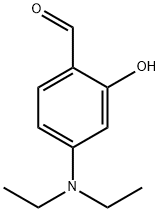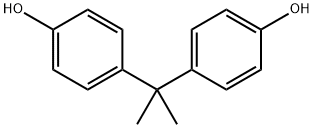Bisacodyl
Synonym(s):4,4′-(2-pyridylmethylene)-bisphenol diacetate;Bisacodyl
- CAS NO.:603-50-9
- Empirical Formula: C22H19NO4
- Molecular Weight: 361.39
- MDL number: MFCD00038039
- EINECS: 210-044-4
- SAFETY DATA SHEET (SDS)
- Update Date: 2025-12-28 08:51:53

What is Bisacodyl?
Absorption
Oral formulations of bisacodyl are only 16% bioavailable. A 10 mg enteric coated oral tablet reaches a Cmax of 26 ng/mL with a Tmax of 8 hours, while a 10 mg oral solution reaches a Cmax of 237 ng/mL with a Tmax of 1.7 hours. A 10 mg suppository reaches a Cmax of 0-64 ng/mL.
In lactating women, 10mg of oral bisacodyl reaches a Cmax of 20.5-195 ng/mL, with a Tmax of 3-4 hours, and a geometric mean AUC after a single dose of 471 h*ng/mL. After multiple doses, the geometric mean AUC decreases to 311 h*ng/mL.
Toxicity
Patients experiencing an overdose of bisacodyl may present with more severe diarrhea and electrolyte imbalance. Patients should be treated with symptomatic and supportive measures.
The oral LD50 in rats is 4320 mg/kg, and in mice is 17500 mg/kg.
Chemical properties
Crystalline Solid
Originator
Dulcolax,Boehringer Ingelheim,US,1958
The Uses of Bisacodyl
Bisacodyl is used in the inhibition of (Na+K)ATPase, the increase of mucosal PGE2, and the activation of adenyl cyclase in rat intestine studies. It is used as a laxative drug. It is typically prescribed for relief of constipation.
The Uses of Bisacodyl
Cathartic.
The Uses of Bisacodyl
Stimulant laxative.
Indications
Bisacodyl is indicated to relieve occasional constipation and irregularity.
Background
Bisacodyl, a diphenylmethane derivative, is a commonly used over the counter stimulant laxative for occasional constipation. Both bisacodyl and picosulfate are metabolized to the same active metabolite bis-(p-hydroxyphenyl)-pyridyl-2-methane (BHPM).
Bisacodyl was patented on 25 September 1956 but has been used as a laxative since 1952.
What are the applications of Application
Bisacodyl is a hygroscopic diphenol
Definition
ChEBI: Bisacodyl is a diarylmethane.
Manufacturing Process
Preparation of (4,4'-Dihydroxy-Diphenyl)-(Pyridyl-2)-Methane
70.0 grams of α-pyridine aldehyde are fed portionwise with stirring and
cooling to a mixture of 200 grams of phenol and 100 cc of concentrated
sulfuric acid. The reaction mixture is allowed to stand for a while with
repeated stirring, whereby it becomes syrupy, neutralized with sodium
carbonate, dissolved in methanol and filtered. The filtrate is introduced into a
large quantity of water and the resulting precipitate is recrystallized from a
methanol/water mixture. Colorless crystals are obtained of MP 254°C. When
using zinc chloride or tin tetrachloride and warming to a temperature of about
50°C, a corresponding result is obtained.
Preparation of Bisacodyl: 5 grams of (4,4'-dihydroxy-diphenyl)-(pyridyl-2)-
methane are heated with 5 grams of anhydrous sodium acetate and 20 cc of
acetic anhydride for three hours over a boiling water bath. The cooled reaction
mixture is poured into water, whereby after a while a colorless substance
precipitates, which is filtered off with suction, washed with water and
recrystallized from aqueous ethanol. Colorless bright crystals, MP 138°C are
obtained.
brand name
Correctol Tablets, Caplets (Schering-Plough HealthCare); Dulcolax (Boehringer Ingelheim); Evac-Q-Tabs (Savage); Feen-a- Mint Tablets (Schering-Plough HealthCare); Modane (Savage); SK-Bisacodyl (SmithKline Beecham); Theralax (SmithKline Beecham).
Therapeutic Function
Laxative
Pharmacokinetics
Patients should be counselled regarding abdominal pain, nausea, vomiting, or a change in bowel function that lasts longer than 2 weeks. It has a wide therapeutic index, as patients can take 5-15 mg orally. Patients taking bisacodyl should be counselled before taking the medication if they are already experiencing abdominal pain, nausea, vomiting, or a change in bowel function lasting longer than 2 weeks. Patients should also be counselled to stop taking the medication if they experience rectal bleeding or no bowel movement in 12 hours.
Clinical Use
Laxative
Veterinary Drugs and Treatments
Bisacodyl oral and rectal products are used as stimulant cathartics in dogs and cats.
Metabolism
Bisacodyl is deacetylated to the active bis-(p-hydroxyphenyl)-pyridyl-2-methane (BHPM) by an intestinal deacetylase. A small amount of BHPM is absorbed from the gastrointestinal tract, and is glucuronidated before elimination.
Metabolism
Bisacodyl is rapidly hydrolysed to the active principle bis-(p-hydroxyphenyl)-pyridyl-2-methane (BHPM), mainly by esterases of the enteric mucosa. After oral and rectal administration, only small amounts of the drug are absorbed and are almost completely conjugated in the intestinal wall and the liver to form the inactive BHPM glucuronide. Following the administration of bisacodyl coated tablets, an average of 51.8% of the dose was recovered in the faeces as free BHPM and an average of 10.5% of the dose was recovered in the urine as BHPM glucuronide. Following the administration as a suppository, an average of 3.1% of the dose was recoveredas BHPM glucuronide in the urine. Stool contained large amounts of BHPM (90% of the total excretion) in addition to small amounts of unchanged bisacodyl
Properties of Bisacodyl
| Melting point: | 138°C |
| Boiling point: | 493.21°C (rough estimate) |
| Density | 1.2545 (rough estimate) |
| refractive index | 1.5614 (estimate) |
| storage temp. | Sealed in dry,2-8°C |
| solubility | Practically insoluble in water, soluble in acetone, sparingly soluble in ethanol (96 per cent). It dissolves in dilute mineral acids. |
| form | neat |
| pka | 4.69±0.10(Predicted) |
| form | Solid |
| color | White to Off-White |
| Water Solubility | Soluble in alcohol (slightly), ether (slightly), chloroform, and acetone. Insoluble in water. |
| λmax | 220nm(MeOH)(lit.) |
| Merck | 14,1242 |
| Stability: | Stable. Incompatible with strong oxidizing agents. |
| CAS DataBase Reference | 603-50-9(CAS DataBase Reference) |
| NIST Chemistry Reference | Bisacodyl(603-50-9) |
| EPA Substance Registry System | Phenol, 4,4'-(2-pyridinylmethylene)bis-, diacetate (ester) (603-50-9) |
Safety information for Bisacodyl
| Signal word | Warning |
| Pictogram(s) |
 Exclamation Mark Irritant GHS07 |
| GHS Hazard Statements |
H315:Skin corrosion/irritation H319:Serious eye damage/eye irritation H335:Specific target organ toxicity, single exposure;Respiratory tract irritation |
| Precautionary Statement Codes |
P261:Avoid breathing dust/fume/gas/mist/vapours/spray. P264:Wash hands thoroughly after handling. P264:Wash skin thouroughly after handling. P271:Use only outdoors or in a well-ventilated area. P280:Wear protective gloves/protective clothing/eye protection/face protection. P302+P352:IF ON SKIN: wash with plenty of soap and water. P305+P351+P338:IF IN EYES: Rinse cautiously with water for several minutes. Remove contact lenses, if present and easy to do. Continuerinsing. |
Computed Descriptors for Bisacodyl
| InChIKey | KHOITXIGCFIULA-UHFFFAOYSA-N |
Bisacodyl manufacturer
New Products
4,4-Difluoropiperidine hydrochloride tert-butyl 9-methoxy-3-azaspiro[5.5]undecane-3-carboxylate Indole Methyl Resin N-Isopropylurea N,N-Dicyclohexylcarbodiimide(DCC) MELDRUMS ACID 5-METHYLISOXAZOLE-4-CARBOXYLIC ACID Magnessium Bis glycinate Zinc ascorbate 1-bromo-2-butyne 2-acetamidophenol 9(10H)-anthracenone Erythrosin B, 4-Piperidinopiperidine 2-((4-morpholinophenylamino) (methylthio) methylene) malononitrile 2,4-dihydroxybenzaldehyde 3-(4-morpholinophenylamino)-5-amino-1H-pyrazole-4-carbonitrile Methyl 2-methylquinoline-6-carboxylate 2,6-dichloro-4-nitropyridine 4-Bromo-2-chlorobenzonitrile 2-(benzylamino)acetic acid hydrochloride 4-(tert-Butoxycarbonylamino)but- 2-ynoic acid 3,4-dihydro-2H-benzo[b][1,4]dioxepine 1-Phenyl-1-cycloprppanecarboxylicacidRelated products of tetrahydrofuran








You may like
-
 603-50-9 Bisacodyl 98%View Details
603-50-9 Bisacodyl 98%View Details
603-50-9 -
 603-50-9 Bisacodyl 99%View Details
603-50-9 Bisacodyl 99%View Details
603-50-9 -
 Bisacodyl 98%View Details
Bisacodyl 98%View Details
603-50-9 -
 603-50-9 Bisacodyl 98%View Details
603-50-9 Bisacodyl 98%View Details
603-50-9 -
 Bisacodyl CAS 603-50-9View Details
Bisacodyl CAS 603-50-9View Details
603-50-9 -
 Bisacodyl 98% CAS 603-50-9View Details
Bisacodyl 98% CAS 603-50-9View Details
603-50-9 -
 Bisacodyl >98% (HPLC) CAS 603-50-9View Details
Bisacodyl >98% (HPLC) CAS 603-50-9View Details
603-50-9 -
 Bisacodyl Powder API, Industrial GradeView Details
Bisacodyl Powder API, Industrial GradeView Details
603-50-9
